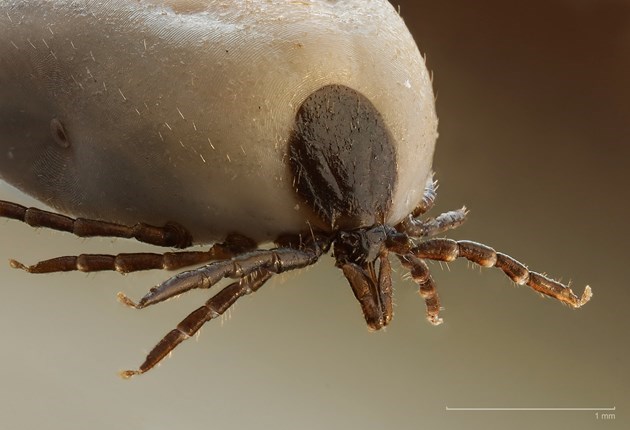The North Bay Parry Sound District Health Unit has confirmed a blacklegged tick found in Dunchurch tested positive for the bacterium Borrelia burgdorferi, a bacteria that can cause Lyme disease.
To date in 2019, 14 ticks have been sent for identification, with nine being identified as blacklegged.
Only one of those nine ticks tested positive for the bacteria that causes Lyme disease.
Although the sample size is small, the yearly trend indicates that there is an increased presence of blacklegged ticks testing positive in our district. In 2018, out of 51 ticks submitted to the Health Unit 30 were blacklegged and of those seven tested positive for the bacterium Borrelia burgdorferi.
The positive ticks were found throughout the district and not in any one specific location.
“Although the risk of being infected in our catchment area still remains low, it is increasingly important to protect yourself from tick exposure,” says Brendan Hatton, Senior Public Health Inspector. “To prevent a tick bite use both insect repellent and protective clothing, always check for ticks after being outdoors, and if you find a tick remove it immediately.”
Methods to prevent tick bites include:
- Use bug spray or other insect repellants that contain DEET or Icaridin;
- Wear long-sleeved shirts and long pants, and tuck your shirt into your pants and your pants into your socks;
- Wear light-coloured clothing to spot ticks more easily;
- Search your clothes and body for ticks at least once a day, paying special attention to areas such as the groin, navel, armpits, scalp, behind ears and knees;
- Don’t forget to tick check children in your care;
- Try to stay on cleared paths when possible, as ticks are more commonly found in wooded areas, or in tall grasses, bushes and shrubs; and
- Take a shower as soon as you can after being outdoors.
How to remove a tick:
If you find a tick on your body, remove it carefully with tweezers. Grasp the tick by the head as close to the skin as possible. If parts of the tick’s mouth break off and remain in the skin, remove them with tweezers.
If you can’t remove the mouthparts, leave themalone and let the skin heal. Collect the tick, and make note of where you believe to have encountered it. See your health care provider right away, and when possible, bring the tick to the Health Unit.
